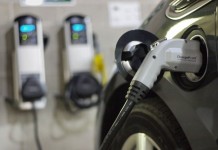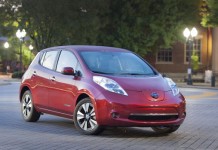FORT RILEY, Kan.: Saving the installation more than $5,700 per year, the First Sergeants Barracks Program utilizes six electric vehicles to move in and around the brigade areas in support of barrack’s assignments, terminations and maintenance calls.
“The use of electric vehicles at Fort Riley benefits in several ways, the two most obvious is in the reduced emissions to the environment and the reduced consumption of fuels and maintenance costs,” said Steve Milton, unaccompanied personnel housing/First Sergeants Barracks Program branch chief with the housing division, Directorate of Public Works. “At an average fuel and maintenance consumption of $80 per month, times six vehicle equates to $480 per month, times 12 months – $5,760 per year.”
This is a significant decrease in the cost of utilizing a regular vehicle at about $225 per month with lease, fuel and maintenance, he said.
The vehicles are utility vehicles manufactured by Columbia ParCar Corporation, Reedsburg, Wis. Stood up in October 2009 at Fort Riley, the First Sergeants Barracks Program is part of the Army plan to improve the quality of life for single Soldiers and to standardize the management of barracks Army-wide.
“FSBP assumes the responsibility of maintaining daily operations away from assigned units and puts it on garrison staff in a style similar to property and apartment complex management,” Milton said.
The goals of the program includes improving barracks’ utilization, managing vacant barracks’ space during deployment, reducing maintenance response time, decreasing building damages and extending the life of the facilities, thus improving the quality of life for Soldiers, he said.
“It also is a proven cost saver for the Army by consciously taking better care of the barracks and reducing payments for basic allowance for housing to single Soldiers,” Milton said.
The program is built upon the Army leader’s involvement in the well-being of junior enlisted Soldiers residing in barracks, he said. It also will enhance the commander’s ability to concentrate on his primary organizational missions, while still maintaining influence in the welfare of these Soldiers.
“Taking care of Soldiers is a readiness issue,” Milton said. “Installations are communities where the Army lives, trains, works, mobilizes and deploys. The quality and character of these installations is the keystone to caring for the Army’s most precious resource. The underlying premise is that our Soldiers living on our installations deserve the same quality of life afforded the society they have pledged to defend.”








